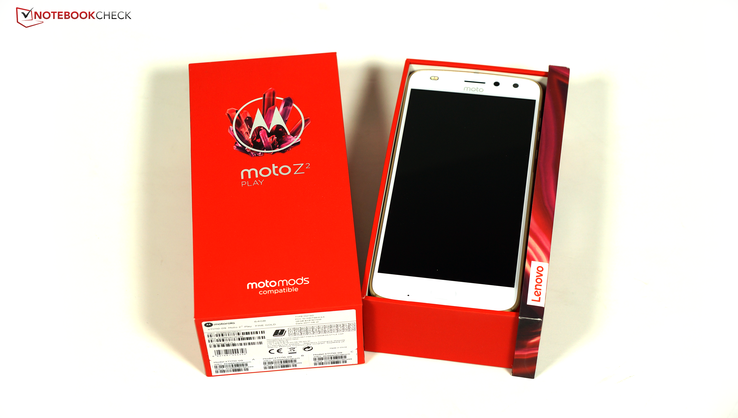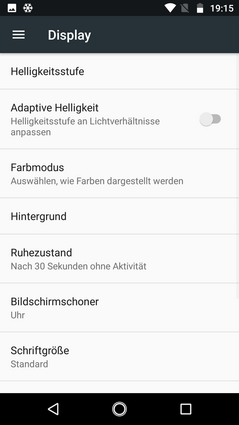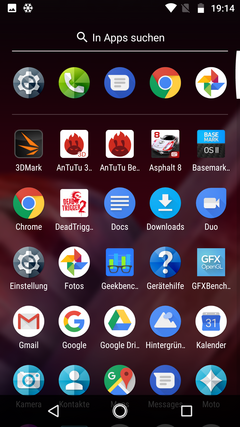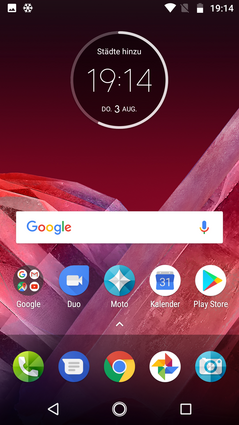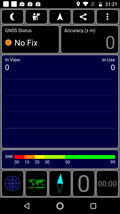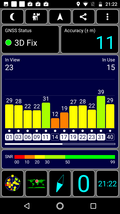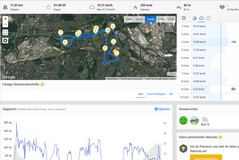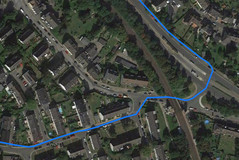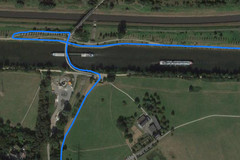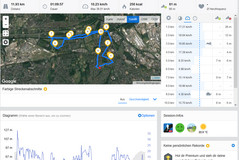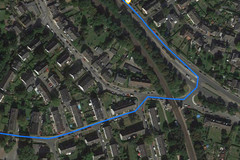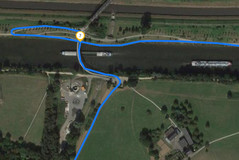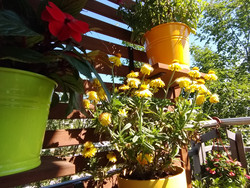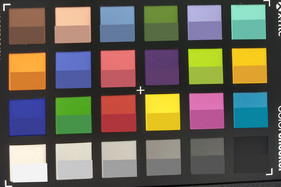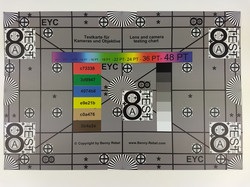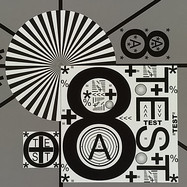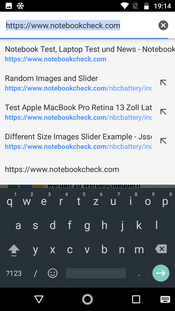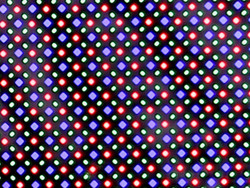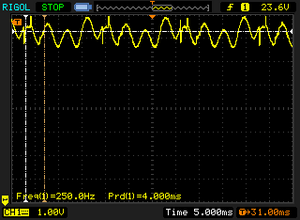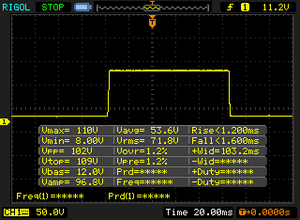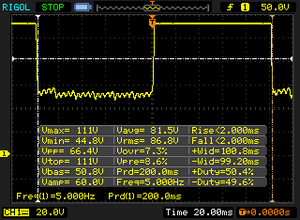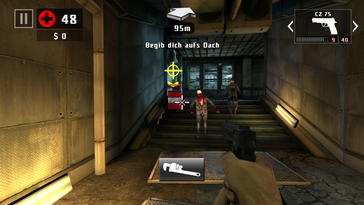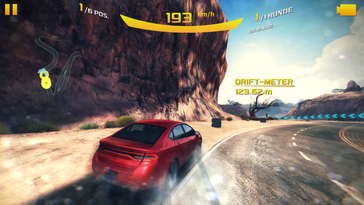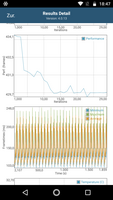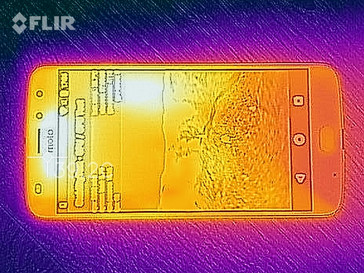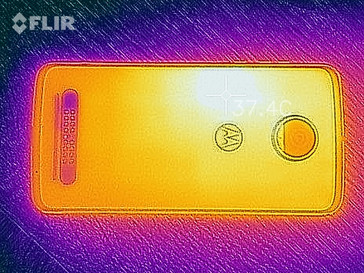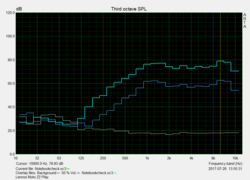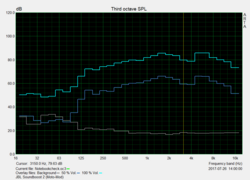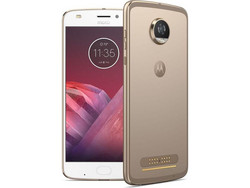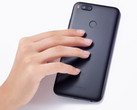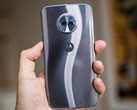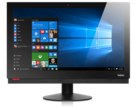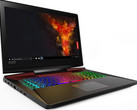Lenovo Moto Z2 Play Smartphone Review
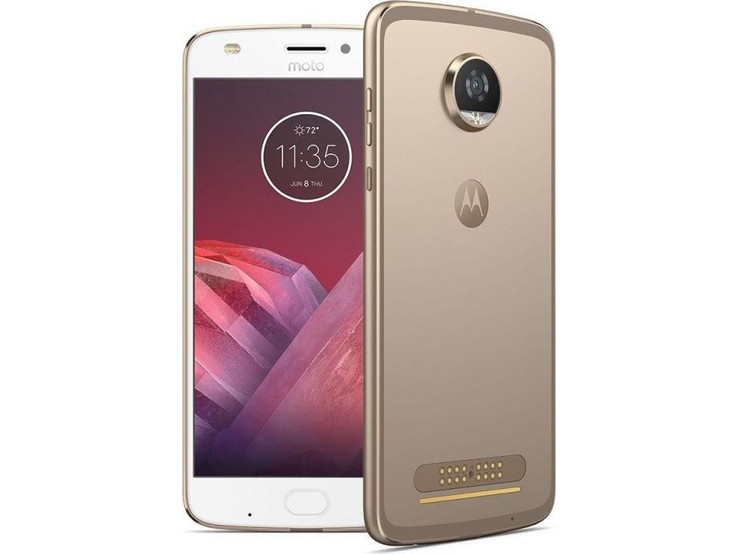
For the original German review, see here.
Lenovo has not really had luck with its Moto Z smartphones until now. The modular design did not really convince buyers. Perhaps because modules can only be added but internal components cannot be replaced. Lenovo really had something to offer with its Moto Z and Moto Z Play. The devices were (apart from the protruding camera) very slim, of high quality, rigid, powerful, and had a good battery life. Dual-SIM models existed and Motorola-typical features, such as pure Android and notifications being displayed on a turned off screen when the smartphone was picked up or when the user approached it, were installed.
But now everything should be better: Alongside a torrent of new Moto Mods that extend the smartphone on the rear, the Moto Z2 Play is also launched on the market. The mid-range member of the modular smartphone lineup has been subtly redesigned and is now even slimmer. The battery in the Moto Z2 Play is smaller than that of its predecessor whose convincing purchase argument was primarily its long battery life.
The Moto Z2 Play is priced at 499 Euros ($555 / 64 GB), which places it on a level with Honor's 8 Pro, OnePlus' 5, and Samsung's Galaxy S7 Edge. The price of HTC's U Ultra has also dropped into these price regions now. The predecessor is presently available for almost 300 Euros ($334). Is it worthwhile to buy the new model? We will find out in our extensive test.
Case
The casing of Lenovo's Moto Z2 Play now has a thickness of just 6 millimeters (~0.2 in). This is even one millimeter less than the former Moto Z Play and much slimmer than all comparison devices. However, the camera protrudes two millimeters out of the casing. A dark-gray rear with a black front and a gold-colored rear with a white front, like our review sample, are the available colors. While the metal bezel and rear are matte and fingerprints hardly become visible, the edges are polished just like the Motorola logo inserted into the rear. Relatively wide edges enclose the screen on the front. This is naturally more evident in the white model than in the black version. The fingerprint sensor has been inserted into the casing quite inconspicuously. However, the gaps are not one-hundred percent accurate here. Otherwise, the build is very solid and the curved design makes the Moto Z2 Play pleasant to hold.
The Moto Z2 Play also weighs 20 grams (~0.7 oz) less than its predecessor and is now definitely an absolute lightweight with 145 grams (~5.1 oz). The battery cannot be removed due to the slim build and the casing cannot be opened. The rigid metal casing protects the screen well, and pressure from the front or the back is not passed to it. A very quiet cracking noise can be heard when twisting the handset.
Connectivity
The Moto Z2 Play comes with either 3 GB of RAM and 32 GB of storage or 64 GB of working memory and 4 GB of RAM. As its predecessor, the Moto Z2 Play has a 3.5-mm audio jack while the premium Moto Z transmits audio via its USB-C port. Many customers will likely find the audio jack advantageous since standard headphones function without an adapter.
We are testing the single-SIM variant of the Moto Z2 Play. A dual-SIM model also exists and has a dedicated micro-SD slot so that two SIM cards and a micro-SD card can be inserted. The micro-SD card can extend the storage by up to 2 TB. However, micro-SD cards with this capacity are not yet available. The SD card can be formatted as internal storage; apps cannot be installed on the external storage.
Software
As Lenovo took over Motorola from Google, the manufacturer also adopted the tradition of a pure-as-possible Android for ensuring faster and easier updates. Android 7.1.1 is installed on our smartphone, and the security patches are from 1st May 2017, which was no longer up-to-date at test time. Prolonged pressure on the home button activates Google's assistant, which is either activated by typing questions or the classic voice command "OK Google". The user can ask questions, create appointments and answer quizzes or many other things. The voice recognition functioned well, but sometimes the submenus got confusing as they needed one confirmation too many until the desired action happened.
Motorola/Lenovo does not install any adware or bloatware apart from Google's proprietary apps that naturally tempt the user to buy videos or music from the Play Store. Generally, very few additional apps are installed. There is only an app for controlling the Moto Mods, the Moto app that controls the smartphone's special handling, and a device assistance app that explains the smartphone.
Communication and GPS
Like the predecessor, Lenovo's Moto Z2 Play supports LTE Cat.7 and thus download speeds of up to 300 MBit/s and upload speeds of up to 150 MB/s. In total, not as many frequency bands are supported as in the predecessor. The 1700 MHz UMTS band has been omitted just like the 4, 12, and 17 LTE bands. In return, bands 38, 40, and 41 are now supported. The user should find out which bands are needed when traveling to far away countries. The Moto Z2 Play is not an explicit world phone. However, Europe should not be a problem. We almost always measured 3/4 of the signal strength indoors using the well-developed German D2 network, and thus a good reception quality can be assumed.
The 802.11ac Wi-Fi standard is still not supported. Equally priced comparison devices have a clear advantage now. Furthermore, the Wi-Fi speed of the Moto Z2 Play is very slow and even lags behind its predecessor in the comparison. Perhaps Lenovo can improve this a bit with an update, but the user should not rely on this too much. Normal websites usually do not send overly large data amounts through the network, and thus the difference here is not as extreme as in downloading or streaming. In any case, pages open adequately fast in the router's vicinity and the full signal is available. However, it is visible that the progress bar sometimes stutters in YouTube videos. The reception dropped to 3/4 at a distance of 10 meters (~33 ft) from the router and with three walls between the smartphone and access point. Websites still opened at the same speed as when near the router.
| Networking | |
| iperf3 transmit AX12 | |
| OnePlus 5 | |
| Samsung Galaxy S7 Edge | |
| HTC U Ultra | |
| Honor 8 Pro | |
| Lenovo Moto Z Play | |
| Lenovo Moto Z2 Play | |
| iperf3 receive AX12 | |
| OnePlus 5 | |
| Samsung Galaxy S7 Edge | |
| HTC U Ultra | |
| Honor 8 Pro | |
| Lenovo Moto Z Play | |
| Lenovo Moto Z2 Play | |
The GPS module is too weak to find us indoors. It also takes a while before the signal is strong enough outdoors, and the user will have to be satisfied with an accuracy of 11 meters (~36 ft) even then.
We take the Moto Z2 Play on a mountain bike trip for a test under real-world conditions. Garmin's Edge 500 professional navigation system for cyclists is also in the bag. Both devices measure exactly the same distance, which is very good. The Moto Z Play also proves to be very accurate with details. Although it displays a few extra corners than the professional device, this should be insignificant for amateur athletes or when navigating in the field. Thus, we can unreservedly recommend the Moto Z2 Play for navigating.
Telephony and Call Quality
Lenovo uses Google's stock phone app in all of its Motorola devices. It is easy to use and designed very logically.
The call quality is good. The microphone is especially pleasing with its clear voice transmission to our contact. The earpiece transmits sounds quite naturally, however, it sometimes distorts and could have a bit more power in louder environments. The good microphone is also noticed favorably when making calls in hands-free mode, and the speaker produces our contact’s voice with a warm tone.
Cameras
At first glance, it seems as though Lenovo has made cutbacks in the cameras. When looking only at the megapixel count, the 12-megapixel camera in Lenovo's Moto Z2 Play is not as good as the one in the predecessor. The latter had 16 megapixels. However, the pixel count does not say much about the photo quality. The Moto Z2 Play especially wants to shine with the combination of diverse auto-focus technologies here. Thus, it sports a laser auto-focus that can quickly and accurately determine the sharpness at close range. A phase comparison auto-focus with dual-pixel technology is also installed.
The primary camera shoots fairly sharp photos that stand out with vivid colors. Their exposure is good and offer more contrast than, for example, the photos taken with Honor's 9. The sharpness is still quite good at the edges. The Moto Z Play already stood out with this. Overall, the photo quality is on a similar level as its predecessor. The photos are perhaps a touch sharper. The auto-focus often cannot determine the right sharpness in low-light conditions. In return, the image noise is not very high. Videos can be recorded in 2160p at 30 frames per second. The color reproduction is good here, the exposure adapts quickly to changing conditions and the auto-focus is also convincing.
The front camera still has a resolution of 5 megapixels. It shoots well-exposed photos with vivid colors. Its image sharpness is also good and a dual-LED flash supports it in dark situations.
Colors in photos of the Moto Z Play's primary camera have a slight reddish tint and thus look relatively warm. We noticed this during the outdoor test and our lab results under predefined conditions confirms this. Otherwise, colored areas are reproduced quite homogeneously although they are slightly frayed at the edges. The same is true for text on a colored background or for fine lines that do not have an absolutely clear-cut edge. However, this issue is much stronger with other smartphones. The image sharpness is also excellent under lab conditions, and thus we can attest the Moto Z2 Play to have overall good camera modules.
Accessories and Warranty
Buyers will have to be satisfied with a 12-month warranty on Moto smartphones. Please see our Guarantees, Return policies and Warranties FAQ for country-specific information. Naturally, the accessories are an interesting chapter of the Moto Z2 Play since it is a modular smartphone. Different modules, such as a speaker, projector or camera with zoom, can be connected to the smartphone via magnets on the device's rear. All Moto Mods that are presently on the market are also compatible with the Moto Z2 Play, and even Mods for the next Moto Z generation are supposed to function with the handset. Lenovo provided us with a JBL Soundboost 2, among other Mods, for the test. It turns the Moto Z2 Play into a portable speaker with a small kickstand. We will look at its sound quality in "Speaker". The build of the speaker with a kickstand makes a solid impression, and the blue model that we received is very stylish although its color would look better with the dark model. However, that is a matter of taste.
Lenovo also provided us with a Turbo Power Pack that more than doubles the battery capacity of Lenovo's Moto Z2 Play. It has a dedicated power-in and recharges the internal battery, with an option of limiting the recharge capacity to 80% for extending the battery life. Lenovo also included two Style Covers, which simply redesign the Moto Z2 Play's rear. They are available in stylish designs such as wood or nylon.
True for both the speaker and battery pack: The Moto Z2 Play's weight and dimensions are increased considerably and it is then almost impossible to put it into a jean's pocket or hold it as comfortably. We have the impression that the Mods are made more for temporary use than to remain connected to the handset permanently. The easy connection and removal of the mods, while they are attached securely, is one thing that we liked about all Moto Mods. Furthermore, they are identified reliably and all Mods can be managed conveniently via the Moto Mod app.
Input Devices and Handling
Matching to pure Android, Google's GBoard virtual keyboard is preloaded. Google's keyboard app is easy to use and clearly arranged. Thanks to Google's incorporated assistant, suggestions are automatically provided according to the input, for example nearby cafes. The touchscreen offers a very gliding-friendly surface and it is sensitive up into the corners.
The hardware buttons are compiled on the right. The standby button has light grooves and thus easy to feel. The two volume control buttons have a clear pressure point and are comfortable to use. The fingerprint sensor on the front wakes up the smartphone from standby, and it responds quickly and reliably to the finger. Users who do not want the onscreen menu buttons can use the fingerprint scanner for navigating. A short tap brings the user back to the home screen and swiping left or right either goes back a step or opens an overview of running apps. Gestures that the phone understands are called Moto Actions. For example, shaking the smartphone twice turns on the flashlight or turning the handset around mutes it. It also has its own voice control, but this is currently only available for the US and Brazil.
Display
Like in the Moto Z Play, a Full HD screen with a diameter of 5.5 inches is installed. Higher resolution panels are available in this price range now, but a Full HD screen is usually sufficient since hardly any differences to higher resolution screens are visible on such as small panel.
It is an AMOLED screen. These screens are becoming more and more popular in this price range. Unfortunately, it has to be said that the screen's rates are a step backward compared with the predecessor. Where the Moto Z Play still managed an average brightness of 511 cd/m², the Moto Z2 Play only achieves 404 cd/m² - a clear step backward. The illumination is now also considerably less homogeneous: The darkest measured point is only 81% as bright as the brightest. Slight brightness differences in large colored areas are already visible to the naked eye.
| |||||||||||||||||||||||||
Brightness Distribution: 81 %
Center on Battery: 434 cd/m²
Contrast: ∞:1 (Black: 0 cd/m²)
ΔE ColorChecker Calman: 4.4 | ∀{0.5-29.43 Ø4.77}
ΔE Greyscale Calman: 4.2 | ∀{0.09-98 Ø5}
Gamma: 2.24
CCT: 7343 K
| Lenovo Moto Z2 Play AMOLED, 1920x1080, 5.5" | Honor 8 Pro IPS, 2560x1440, 5.7" | Lenovo Moto Z Play AMOLED, 1920x1080, 5.5" | OnePlus 5 AMOLED, 1920x1080, 5.5" | HTC U Ultra SLCD 5, 2560x1440, 5.7" | Samsung Galaxy S7 Edge Super AMOLED, 2560x1440, 5.5" | |
|---|---|---|---|---|---|---|
| Screen | 19% | 32% | 33% | -20% | 45% | |
| Brightness middle (cd/m²) | 434 | 541 25% | 509 17% | 426 -2% | 470 8% | 554 28% |
| Brightness (cd/m²) | 404 | 514 27% | 511 26% | 431 7% | 445 10% | 552 37% |
| Brightness Distribution (%) | 81 | 91 12% | 93 15% | 93 15% | 88 9% | 96 19% |
| Black Level * (cd/m²) | 0.3 | 0.22 | ||||
| Colorchecker dE 2000 * | 4.4 | 3.2 27% | 2.2 50% | 1.6 64% | 5.5 -25% | 1.59 64% |
| Colorchecker dE 2000 max. * | 8.6 | 7.2 16% | 5.8 33% | 4.1 52% | 11.9 -38% | 2.56 70% |
| Greyscale dE 2000 * | 4.2 | 4 5% | 2 52% | 1.7 60% | 7.6 -81% | 2.01 52% |
| Gamma | 2.24 98% | 2.27 97% | 2.25 98% | 2.25 98% | 2.2 100% | 2.01 109% |
| CCT | 7343 89% | 7120 91% | 6768 96% | 6329 103% | 7454 87% | 6321 103% |
| Contrast (:1) | 1803 | 2136 | ||||
| Color Space (Percent of AdobeRGB 1998) (%) | 82.12 | |||||
| Color Space (Percent of sRGB) (%) | 99.98 |
* ... smaller is better
Screen Flickering / PWM (Pulse-Width Modulation)
| Screen flickering / PWM detected | 250 Hz | ||
The display backlight flickers at 250 Hz (worst case, e.g., utilizing PWM) . The frequency of 250 Hz is relatively low, so sensitive users will likely notice flickering and experience eyestrain at the stated brightness setting and below. In comparison: 53 % of all tested devices do not use PWM to dim the display. If PWM was detected, an average of 8083 (minimum: 5 - maximum: 343500) Hz was measured. | |||
The black value and contrast are naturally perfect since the AMOLED technology simply deactivates individual pixels and can thus display absolute black. Unfortunately, Lenovo uses a PWM frequency of just 250 Hz to dim the screen. This means that the screen is turned on and off 250 times in a second, and it thus looks darker to the eyes. Since this frequency is quite low, sensitive users can perceive this flickering.
Two settings can be selected for controlling the colors on the screen: Standard and intensive. We tested both modes with the spectrophotometer and CalMAN software. We discovered a light bluish tint in both modes, which can be reduced via the incorporated night mode. The reference color deviations are not very high, but they are higher than those of the predecessor. The AdobeRGB color space is even well covered in the intensive mode - this is a good performance.
Display Response Times
| ↔ Response Time Black to White | ||
|---|---|---|
| 2.8 ms ... rise ↗ and fall ↘ combined | ↗ 1.2 ms rise | |
| ↘ 1.6 ms fall | ||
| The screen shows very fast response rates in our tests and should be very well suited for fast-paced gaming. In comparison, all tested devices range from 0.1 (minimum) to 240 (maximum) ms. » 12 % of all devices are better. This means that the measured response time is better than the average of all tested devices (20.2 ms). | ||
| ↔ Response Time 50% Grey to 80% Grey | ||
| 4 ms ... rise ↗ and fall ↘ combined | ↗ 2 ms rise | |
| ↘ 2 ms fall | ||
| The screen shows very fast response rates in our tests and should be very well suited for fast-paced gaming. In comparison, all tested devices range from 0.165 (minimum) to 636 (maximum) ms. » 14 % of all devices are better. This means that the measured response time is better than the average of all tested devices (31.6 ms). | ||
We like the viewing angles since colors do not shift when looking at the screen from the side. The Moto Z2 Play also does a good job outdoors although the higher brightness of its predecessor would have contributed to more flexibility in bright light. The ambient light sensor visibly increases the maximum brightness and it should be enabled when going outdoors.
The Moto Z2 Play has a Qualcomm Snapdragon 626 SoC with eight cores and clock speed of 2.2 GHz. Compared with the predecessor based on a Snapdragon 625, the performance differences are low and probably will not be perceived in practice. The only difference between both SoCs is apparently only the 200 MHz higher maximum clock. All other devices in the comparison have much stronger high-end SoCs.
Again, Qualcomm's Adreno 506 graphics unit with a clock speed of 650 MHz is used in the Moto Z2 Play. As expected, the Moto Z2 Play achieves very similar performance rates as the predecessor with the same graphics unit. The comparison devices can again provide much higher frame rates here.
| AnTuTu v6 - Total Score (sort by value) | |
| Lenovo Moto Z2 Play | |
| Honor 8 Pro | |
| Lenovo Moto Z Play | |
| OnePlus 5 | |
| HTC U Ultra | |
| Samsung Galaxy S7 Edge | |
| PCMark for Android | |
| Work performance score (sort by value) | |
| Lenovo Moto Z2 Play | |
| Honor 8 Pro | |
| Lenovo Moto Z Play | |
| OnePlus 5 | |
| HTC U Ultra | |
| Samsung Galaxy S7 Edge | |
| Work 2.0 performance score (sort by value) | |
| Lenovo Moto Z2 Play | |
| Honor 8 Pro | |
| OnePlus 5 | |
| HTC U Ultra | |
| Geekbench 4.4 | |
| 64 Bit Single-Core Score (sort by value) | |
| Lenovo Moto Z2 Play | |
| Honor 8 Pro | |
| OnePlus 5 | |
| 64 Bit Multi-Core Score (sort by value) | |
| Lenovo Moto Z2 Play | |
| Honor 8 Pro | |
| OnePlus 5 | |
| Compute RenderScript Score (sort by value) | |
| Lenovo Moto Z2 Play | |
| OnePlus 5 | |
| GFXBench (DX / GLBenchmark) 2.7 | |
| T-Rex Onscreen (sort by value) | |
| Lenovo Moto Z2 Play | |
| Honor 8 Pro | |
| Lenovo Moto Z Play | |
| OnePlus 5 | |
| HTC U Ultra | |
| Samsung Galaxy S7 Edge | |
| 1920x1080 T-Rex Offscreen (sort by value) | |
| Lenovo Moto Z2 Play | |
| Honor 8 Pro | |
| Lenovo Moto Z Play | |
| OnePlus 5 | |
| HTC U Ultra | |
| Samsung Galaxy S7 Edge | |
| GFXBench 3.0 | |
| on screen Manhattan Onscreen OGL (sort by value) | |
| Lenovo Moto Z2 Play | |
| Honor 8 Pro | |
| Lenovo Moto Z Play | |
| OnePlus 5 | |
| HTC U Ultra | |
| Samsung Galaxy S7 Edge | |
| 1920x1080 1080p Manhattan Offscreen (sort by value) | |
| Lenovo Moto Z2 Play | |
| Honor 8 Pro | |
| Lenovo Moto Z Play | |
| OnePlus 5 | |
| HTC U Ultra | |
| Samsung Galaxy S7 Edge | |
| GFXBench 3.1 | |
| on screen Manhattan ES 3.1 Onscreen (sort by value) | |
| Lenovo Moto Z2 Play | |
| Honor 8 Pro | |
| Lenovo Moto Z Play | |
| OnePlus 5 | |
| HTC U Ultra | |
| Samsung Galaxy S7 Edge | |
| 1920x1080 Manhattan ES 3.1 Offscreen (sort by value) | |
| Lenovo Moto Z2 Play | |
| Honor 8 Pro | |
| Lenovo Moto Z Play | |
| OnePlus 5 | |
| HTC U Ultra | |
| Samsung Galaxy S7 Edge | |
| GFXBench | |
| on screen Car Chase Onscreen (sort by value) | |
| Lenovo Moto Z2 Play | |
| Honor 8 Pro | |
| Lenovo Moto Z Play | |
| OnePlus 5 | |
| HTC U Ultra | |
| Samsung Galaxy S7 Edge | |
| 1920x1080 Car Chase Offscreen (sort by value) | |
| Lenovo Moto Z2 Play | |
| Honor 8 Pro | |
| Lenovo Moto Z Play | |
| OnePlus 5 | |
| HTC U Ultra | |
| Samsung Galaxy S7 Edge | |
Internet browsing looks similar: The Moto Z2 Play is a touch faster than its predecessor and the other smartphones in the comparison are miles ahead. The relatively demanding HTML5 game on letsplay.ouigo.com only runs jerkily and is hardly playable.
| JetStream 1.1 - Total Score | |
| Samsung Galaxy S7 Edge | |
| OnePlus 5 | |
| Honor 8 Pro | |
| HTC U Ultra | |
| Lenovo Moto Z2 Play | |
| Lenovo Moto Z Play | |
| Octane V2 - Total Score | |
| Samsung Galaxy S7 Edge | |
| OnePlus 5 | |
| Honor 8 Pro | |
| HTC U Ultra | |
| Lenovo Moto Z2 Play | |
| Lenovo Moto Z Play | |
| Mozilla Kraken 1.1 - Total | |
| Lenovo Moto Z Play | |
| Lenovo Moto Z2 Play | |
| HTC U Ultra | |
| Honor 8 Pro | |
| OnePlus 5 | |
| Samsung Galaxy S7 Edge | |
| WebXPRT 2015 - Overall | |
| Samsung Galaxy S7 Edge | |
| OnePlus 5 | |
| Honor 8 Pro | |
| Lenovo Moto Z2 Play | |
| Lenovo Moto Z Play | |
* ... smaller is better
We tested how fast the internal storage and a memory card could be accessed. Lenovo's Moto Z2 Play does a fairly good job with reading and writing on the micro-SD card and is on a slightly higher level than Lenovo's Moto Z Play. The same is true for accessing the internal storage. However, the other comparison devices again have a clear lead here.
| Lenovo Moto Z2 Play | Honor 8 Pro | Lenovo Moto Z Play | OnePlus 5 | HTC U Ultra | Samsung Galaxy S7 Edge | |
|---|---|---|---|---|---|---|
| AndroBench 3-5 | 119% | -11% | 115% | 27% | 24% | |
| Sequential Read 256KB (MB/s) | 245.6 | 738 200% | 254.8 4% | 748 205% | 423.9 73% | 487.3 98% |
| Sequential Write 256KB (MB/s) | 137.5 | 187.1 36% | 73.1 -47% | 201.5 47% | 164.7 20% | 145.1 6% |
| Random Read 4KB (MB/s) | 38.2 | 166.4 336% | 38.78 2% | 141 269% | 84.2 120% | 86.7 127% |
| Random Write 4KB (MB/s) | 47.9 | 151.6 216% | 45.58 -5% | 19.3 -60% | 13.7 -71% | 15.79 -67% |
| Sequential Read 256KB SDCard (MB/s) | 79.7 | 54.2 -32% | 74.6 -6% | 82.8 4% | 76.4 -4% | |
| Sequential Write 256KB SDCard (MB/s) | 58.7 | 32.16 -45% | 50.6 -14% | 67.6 15% | 50.4 -14% |
Games
Playing games is always possible on Lenovo's Moto Z2 Play. The sophisticated 3D games Dead Trigger 2 and Asphalt 8 always ran smoothly at 30 FPS. However, more is not possible. The device seems to set this limit. Consequently games that are more basic, like Angry Birds, also run very smoothly.
Both the touchscreen and position sensor allow a smooth and easy game control.
| Asphalt 8: Airborne | |||
| Settings | Value | ||
| high | 30 fps | ||
| very low | 30 fps | ||
| Dead Trigger 2 | |||
| Settings | Value | ||
| high | 30 fps | ||
Emissions
Temperature
Such a slim smartphone like Lenovo's Moto Z2 Play could certainly have problems with the SoC's waste heat, couldn't it? If so, Lenovo has it very well under control. The device hardly heats up with a maximum of 33.4 °C (92.12 °F). These temperatures are not much lower in idle with 30.5 °C (86.9 °F). Thus, the smartphone can always be put into the pocket. It never gets unpleasantly warm, not even in the summer.
The SoC does not heat up even during prolonged use: Its performance remains stable even after rendering the same benchmark sequence in the GFXBench Manhattan battery test thirty times in succession.
(+) The maximum temperature on the upper side is 33.4 °C / 92 F, compared to the average of 35.2 °C / 95 F, ranging from 21.9 to 247 °C for the class Smartphone.
(+) The bottom heats up to a maximum of 33.1 °C / 92 F, compared to the average of 34 °C / 93 F
(+) In idle usage, the average temperature for the upper side is 30.8 °C / 87 F, compared to the device average of 32.9 °C / 91 F.
Speaker
The speaker installed in the Moto Z2 Play radiates toward the front, which is actually the ideal position for developing sound. It is quite able to render low medium tones and it can get quite loud at 86.8 dB(A). The sound is relatively warm and balanced, and it is even possible to watch a music video or a movie - quite impressive for such a slim device. Compared with the Moto Mod JBL Soundboost 2, which is simply attached to the rear via magnets, the installed speaker is, of course, much weaker. The much bigger soundscape and specialization on audio allow this Moto Mod to retrieve really good sound from the smartphone. Basses become audible, the volume can be increased even more, and the sound output is considerably more linear.
It is naturally also possible to connect conventional headphones or speakers via the 3.5-mm jack. The sound output is clear here.
Lenovo Moto Z2 Play audio analysis
(+) | speakers can play relatively loud (86.8 dB)
Bass 100 - 315 Hz
(-) | nearly no bass - on average 30.9% lower than median
(±) | linearity of bass is average (9.6% delta to prev. frequency)
Mids 400 - 2000 Hz
(+) | balanced mids - only 4.9% away from median
(+) | mids are linear (5.3% delta to prev. frequency)
Highs 2 - 16 kHz
(+) | balanced highs - only 1.9% away from median
(+) | highs are linear (3.6% delta to prev. frequency)
Overall 100 - 16.000 Hz
(±) | linearity of overall sound is average (19.3% difference to median)
Compared to same class
» 26% of all tested devices in this class were better, 9% similar, 65% worse
» The best had a delta of 11%, average was 35%, worst was 134%
Compared to all devices tested
» 46% of all tested devices were better, 8% similar, 46% worse
» The best had a delta of 4%, average was 24%, worst was 134%
JBL Soundboost 2 audio analysis
(+) | speakers can play relatively loud (94.6 dB)
Bass 100 - 315 Hz
(±) | reduced bass - on average 10.3% lower than median
(+) | bass is linear (6.4% delta to prev. frequency)
Mids 400 - 2000 Hz
(+) | balanced mids - only 2.6% away from median
(+) | mids are linear (2.5% delta to prev. frequency)
Highs 2 - 16 kHz
(+) | balanced highs - only 2.8% away from median
(+) | highs are linear (4.3% delta to prev. frequency)
Overall 100 - 16.000 Hz
(+) | overall sound is linear (10.6% difference to median)
Compared to same class
» 5% of all tested devices in this class were better, 1% similar, 93% worse
» The best had a delta of 4%, average was 24%, worst was 134%
Compared to all devices tested
» 5% of all tested devices were better, 1% similar, 93% worse
» The best had a delta of 4%, average was 24%, worst was 134%
Frequency diagram comparison (checkboxes above can be turned on/off!)
Energy Management
Power Consumption
The predecessor scored in terms of power consumption; none of the comparison devices could boast with the low energy requirement of Lenovo's Moto Z Play at the time. The Moto Z2 Play even undercuts these consumption rates by 8%. The standby consumption is also very low although the sensors permanently have to detect if the user activates Moto Info. The Moto Z2 Play is especially frugal during load. However, it also has to be kept in mind that it is considerably weaker than the comparison devices.
| Off / Standby | |
| Idle | |
| Load |
|
Key:
min: | |
| Lenovo Moto Z2 Play 3000 mAh | Honor 8 Pro 4000 mAh | Lenovo Moto Z Play 3510 mAh | OnePlus 5 3300 mAh | HTC U Ultra 3000 mAh | Samsung Galaxy S7 Edge 3600 mAh | |
|---|---|---|---|---|---|---|
| Power Consumption | -189% | -8% | -132% | -192% | -99% | |
| Idle Minimum * (Watt) | 0.45 | 0.98 -118% | 0.51 -13% | 0.73 -62% | 1 -122% | 0.63 -40% |
| Idle Average * (Watt) | 0.78 | 2.27 -191% | 0.87 -12% | 1.44 -85% | 2.41 -209% | 1.1 -41% |
| Idle Maximum * (Watt) | 0.84 | 2.36 -181% | 0.9 -7% | 1.5 -79% | 2.46 -193% | 1.56 -86% |
| Load Average * (Watt) | 1.69 | 6.58 -289% | 1.69 -0% | 6.91 -309% | 6.8 -302% | 5.95 -252% |
| Load Maximum * (Watt) | 3.79 | 10.12 -167% | 4 -6% | 8.51 -125% | 8.9 -135% | 6.7 -77% |
* ... smaller is better
Battery Runtime
The low consumption rates ensure superb battery runtimes, don't they? Well, if we formulate the question this way, the answer is a clear "yes, but...". The problem of the Moto Z2 Play: Lenovo has reduced the 3510 mAh battery of the predecessor to 3000 mAh in order to slim down the device by one millimeter. This equals an almost 15% lower battery capacity. Although the Moto Z2 Play can still outshine most comparison devices with this, it clearly lags behind the Moto Z Play and only has a slight lead on Samsung's Galaxy S7 Edge.
12:29 hours of Internet browsing are possible before the smartphone shuts down. This is very good. Two workdays of normal use should easily be possible with the smartphone. However, charging takes almost two hours despite the Turbo Power power supply. We have seen other Lenovo smartphones do this faster.
| Lenovo Moto Z2 Play 3000 mAh | Honor 8 Pro 4000 mAh | Lenovo Moto Z Play 3510 mAh | OnePlus 5 3300 mAh | HTC U Ultra 3000 mAh | Samsung Galaxy S7 Edge 3600 mAh | |
|---|---|---|---|---|---|---|
| Battery runtime | -32% | 33% | -29% | -30% | -5% | |
| Reader / Idle (h) | 26.5 | 23 -13% | 42.3 60% | 25.6 -3% | 26.1 -2% | 27.7 5% |
| H.264 (h) | 15.8 | 11.3 -28% | 19.8 25% | 10.4 -34% | 10.1 -36% | 15.2 -4% |
| WiFi v1.3 (h) | 12.5 | 9.6 -23% | 13.7 10% | 8.6 -31% | 9.1 -27% | 12.2 -2% |
| Load (h) | 8 | 3 -62% | 10.9 36% | 4.1 -49% | 3.6 -55% | 6.5 -19% |
Pros
Cons
Verdict
Lenovo's Moto Z2 Play is a good smartphone. It would look even better if the Moto Z Play (no longer) existed. The predecessor does many things just as good, some things just a bit worse, and other things even better while being considerably cheaper.
Are there any reasons at all for buying the successor? The casing of the Moto Z2 Play has been reworked and is now even slimmer. This would be a marketing scheme for a normal smartphone. However, it receives another dimension in the Moto Z2 Play: The attachable Moto Mods can make one millimeter quite significant. The lower weight is also an argument since the Mods add enough weight. Apart from that, the buyer gets a very rigid and stylish casing with a less conspicuous fingerprint scanner than in the predecessor. Fast LTE is installed, but still not 802.11ac Wi-Fi and the lack of appropriate Wi-Fi transmission rates is actually audacious. In return, the GPS module is very accurate and the cameras produce good photos. The screen is darker and the performance is only marginally higher than that of the predecessor. The battery life is still first-rate but also much shorter than that of Lenovo's Z Play.
We would have welcomed more risk taking for the update. Lenovo's Moto Z2 Play is just a reworked version of the Moto Z Play with a slimmer silhouette, as well as smaller battery that hardly offers any real innovations.
We can give the Moto Z2 Play a purchase recommendation if the buyer finds the Moto Mods system convincing, which function very easily and well. The problem here is that often-good alternatives, such as a power bank or Bluetooth speaker, exist. Compared to that, the Moto Mods hardly offer any real advantages. However, buyers should also consider the Moto Z Play and even the Moto Z: Both are presently much cheaper and Lenovo also guaranties the compatibility with the Moto Mods for the next few years.
Lenovo Moto Z2 Play
- 08/15/2017 v6 (old)
Florian Wimmer


